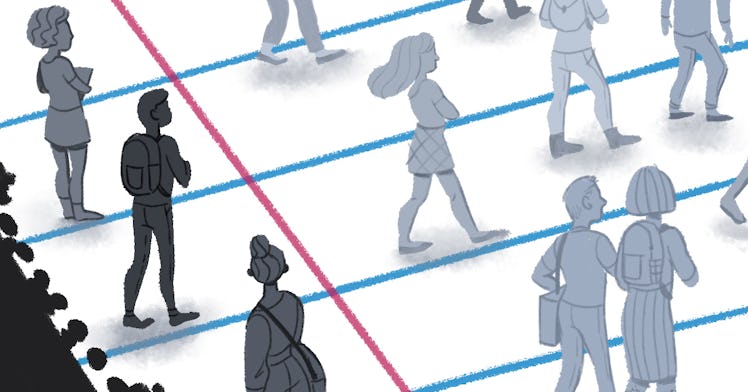Gifted and Talented Programs Deepen Segregation in Schools. How Can We Fix The Problem?
“It is educational malpractice to make a decision about who is gifted and who is not based on one test score or one item.”

Across the country, public school students who score high on intelligence tests are taken out of classrooms and placed into gifted and talented programs — or different schools altogether. These programs were created ostensibly to supplement general education and give students who excel in school more of a challenge. Students identified as gifted might be given an accelerated curriculum or take more field trips. Their grades generally benefit from being around other high achieving students, while the test scores of the students left behind tend to sink.
The idea of giving bright students more challenging material is innocent in theory. The problem is that the gifted and talented label is far more likely to be applied to students who are white and wealthy. School segregation was outlawed in 1954, but today you can still find schools where wealthy white children are placed in separate classrooms with better resources because of a label that is sometimes determined by a single, unreliable test. Gifted education as it stands today systematically privileges white middle-class children, ensuring a pathway through which segregation persists. gifted and talentedDr. Donna Y FordRecruiting and Retaining Culturally Different Students in Gifted Education.middle-class white childrenFatherlyOne part of your research I found striking was that while the population of students becomes increasingly diverse, the teacher population remains largely white women. What are the implications there?anti-racistYou’ve written extensively about how standardized tests that are used to determine admissions to gifted programs tend to identify middle-class white students and disadvantage Black, Latinx, and low-income students. How does that work? What is it about the tests that align with the experiences of middle-class white students? It seems that there is a general level of acceptance that these tests don’t really work. Why do they still exist? One of your recommendations for more equitable gifted program admission is that schools compare student test scores to the school or the district averages, rather than national averages. Why is that more useful?And if kids are testing or otherwise performing at a lower level this year than pre-pandemic years, should teachers change their expectations considering the circumstances? Another suggestion you’ve made for equity in education is that teachers reward effort over ability. And besides, all children learn differently. Some schools are getting rid of gifted programs after the big issues with them are made clear. Do you think that’s like a good solution? Could providing enrichment programs to all students help? Or do you think it’s always best to pull certain students out?I’ve seen some arguments that defend gifted programs with the argument that they are a good way to prevent white flight. But if gifted programs are going to be segregated anyway, is one form of segregation better than the other?Right. So it’s intentional.And over the course of your career, have you seen change?Do you feel like there’s been any progress?What do you see as the future of gifted education? I guess that’s two questions, what you hope to see and what you actually might see.